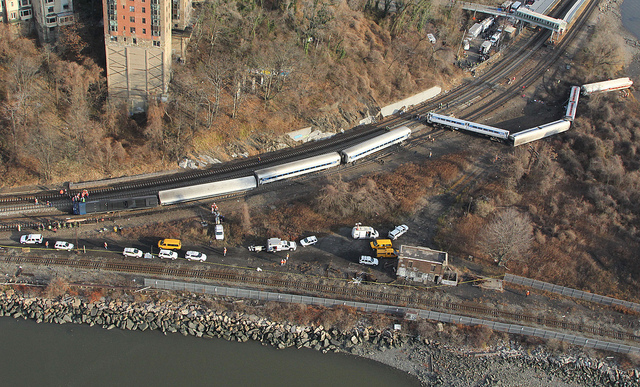A new report from the National Transportation Safety Board concludes that sleep problems played a role in a deadly train derailment last December. The report is a reminder that drowsiness can be a safety threat for any form of travel.
On Dec. 1, 2013, a Metro-North train was traveling from Poughkeepsie to New York City. A locomotive was pushing seven train cars with about 115 passengers.
The train entered a curve where the speed limit was 30 miles per hour. But the train continued traveling at a speed of 82 mph. As a result the locomotive and all seven cars went off the rails. Four people were killed, and 61 others were injured. The accident also caused more than $9 million in damage.
The NTSB reports that more than 800 people died in railroad accidents in 2010. This represents only two percent of all annual U.S. transportation fatalities. About 94 percent of transportation deaths occur on U.S. roads. The Federal Railroad Administration reports that 96 percent of railroad deaths involve trespassing or track-crossing incidents.
The NTSB report concluded that the Metro-North train engineer had fallen asleep. His sleepiness was blamed on undiagnosed, severe obstructive sleep apnea. His sleep also may have been disrupted by a recent change in his work shift.
Sleep problems are a widespread danger in the transportation industry. To promote railroad safety the FRA recently sponsored the development of the Railroaders’ Guide to Healthy Sleep.
In March the NTSB medical report indicated that the Metro-North engineer did not recall events leading up to the accident. He was sent to a board certified sleep medicine physician for an evaluation.
The engineer was obese with a history of snoring. He also reported feeling excessive daytime sleepiness. Yet he had never been screened for sleep apnea by any of his medical providers.
A sleep study found that the engineer had severe sleep apnea. He had an average of more than 50 partial or complete breathing pauses for every hour of sleep. These breathing pauses reduced his oxygen levels. They also prevented him from sleeping well.
The doctor prescribed CPAP therapy for the engineer. After one month of treatment he was using CPAP for about seven hours per night. He reported feeling more energetic. Treatment also eliminated his daytime sleepiness.
The National Healthy Sleep Awareness Project reports that snoring is a warning sign for obstructive sleep apnea. Obesity also is a common risk factor for OSA.
Is sleep apnea putting your health and safety at risk? Pledge to “Stop the Snore” and talk to a doctor about sleep apnea. Treating sleep apnea will put your health back on track.





